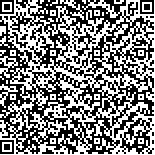附件
|
| 引用本文: | 郭先武.武汉南湖三种摇蚊幼虫生物学特性及其种群变动的研究.湖泊科学,1995,7(3):249-255. DOI:10.18307/1995.0307 |
| Quo Xianwu.Biological characteristics and annual population variance of three chironomid species(diptera:chironomjdae) from South Lake(vWuhan), China. J. Lake Sci.1995,7(3):249-255. DOI:10.18307/1995.0307 |
|
| |
|
|
| 本文已被:浏览 8442次 下载 4645次 |

码上扫一扫! |
|
|
| 武汉南湖三种摇蚊幼虫生物学特性及其种群变动的研究 |
|
郭先武
|
|
华中农业大学水产学院, 武汉 430070
|
|
| 摘要: |
| 通过周年15次野外定量取样结合室内培养,对武汉南湖中的中国长足摇蚊Tanypus chinensis Wang、六附器德永摇蚊Tokunagayusurika sezpapilosus(Yan & Ye)和半褶皱摇蚊Chironomus plumosus f. semireduclus Lenz的种群动态和生物学特性(食性、筑巢、羽化期、世代数、越冬幼虫等)进行了研究,并得出半褶皱摇蚊和六附器德永摇蚊有垂直迁移习性,且这种迁移明显地影响了取样的结果.象六附器德永摇蚊在高温季节下迁、寒冷季节上移的现象罕见,它可作为一种热敏感指示生物。另外,计算出了三种摇蚊幼虫体长和体重的回归方程式。 |
| 关键词: 摇蚊幼虫 生物学特性 种群动态 垂直迁移 武汉南湖 |
| DOI:10.18307/1995.0307 |
| 分类号: |
| 基金项目: |
|
| Biological characteristics and annual population variance of three chironomid species(diptera:chironomjdae) from South Lake(vWuhan), China |
|
Quo Xianwu
|
|
College of Fisheries, Huazhong Aqricultural University, Wuhan, 430070
|
| Abstract: |
| Based on the frequent sampling (15 times) from June, 1987 to May, 1988 and larvae culture in laboratory, the biological characteristics and annual population variance of three chironomid species from South Lake (Wuhan), China were studied. Tanypus chininsis Wang:living in no nest, feeding on detritus and algae, overwintering in only 4th instar, and having an emergence period from August to September and one generation a year. The maxiumum density (848 ind./m2) and biomass (2.28g/m2) occur in September. Tokunagayusurika sexpapilotms (Yan & Ye):nesting vertically, feeding on detritus, overwintering in 1~4th instars, and having a long emergence period from November to January and a generation yearly, different from that in the other area of China. This species has a particularly vertical movement, i. e. moving downward (more than 20cm) from May to October and upward in other months. Therefore, it may be used as a heat indicator. Chrronomus plumosus f. semireducius Lenz:nesting in "U" shape, feeding on detritus, overwintering mainly in 4th instar, having two emergence peaks in May and August seperately, reaching its maximum density (1508 ind./m2) and biomass (9.9 g/m2) in September and October respectively, and moving downwards in winter. In addition, the regressive equations of the length-weight relationship of the three species were given. |
| Key words: Chironomid larvae biological characteristic population variance vertical movement South Lake (Wuhan) |
|
|
|
|